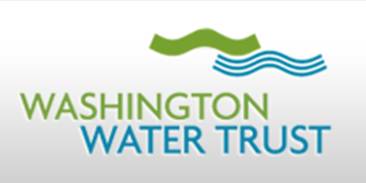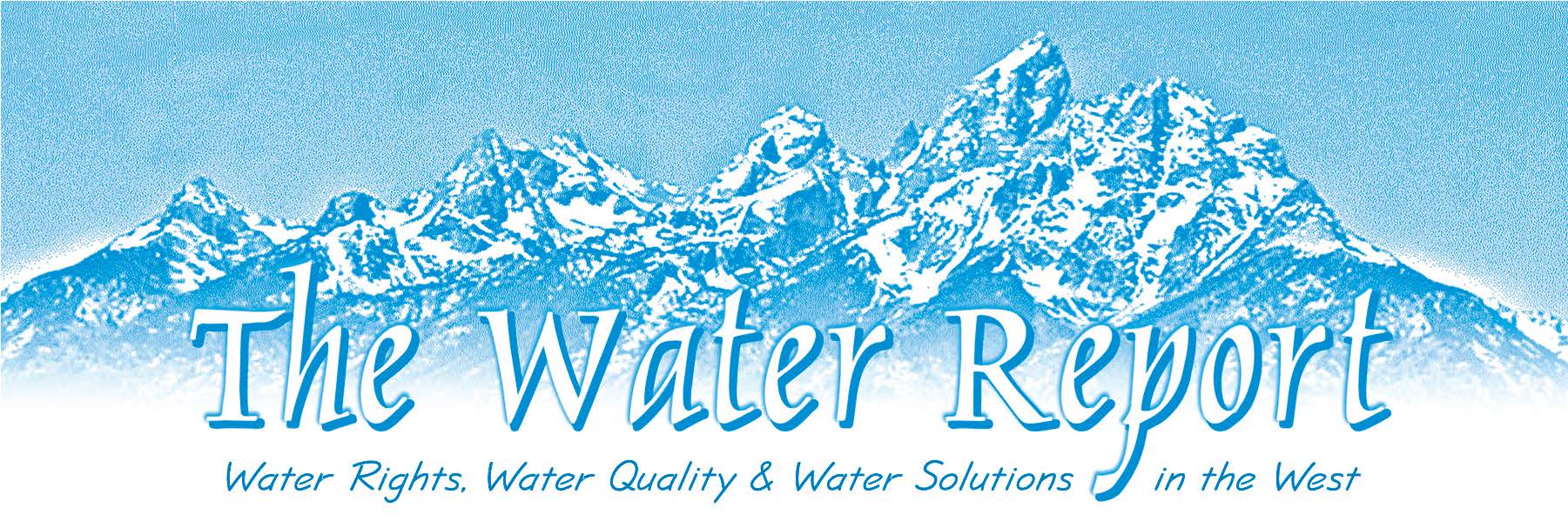
September to November 2024 Edition

Session 1: Drinkable
Summary by Jessica Kuchan – Confluence Law PLLC
The first session of the AWRA-WA State Conference focused on the nature of drinking water contaminants and efforts to provide Drinkable water for out of stream water uses. This panel included three speakers: Patrick Craney of the City of Vancouver, Chris Kelley, of Island County, and Alan Kolok of the University of Idaho.
 Patrick Craney’s presentation “People = PFAS” focused on his experience at the City of Vancouver providing drinking water to his community. The City of Vancouver is the third largest utility in the state and relies on a sole source aquifer. However, the area around the water system’s well field has seen a great deal of development over the past few decades which led to different sources of potential contaminants. Over the past decade, the City has tested for PFAS chemicals, which include several thousand human made chemicals. In 2019, the City had detectable levels of PFAS. Mr. Craney explained that the source of PFAS chemicals is disperse, including industrial sources, landfills, septic tanks, etc. Therefore, the City could not approach the problem by locating a point source; rather, the City has embarked on finding funding sources to develop long term treatment options.
Patrick Craney’s presentation “People = PFAS” focused on his experience at the City of Vancouver providing drinking water to his community. The City of Vancouver is the third largest utility in the state and relies on a sole source aquifer. However, the area around the water system’s well field has seen a great deal of development over the past few decades which led to different sources of potential contaminants. Over the past decade, the City has tested for PFAS chemicals, which include several thousand human made chemicals. In 2019, the City had detectable levels of PFAS. Mr. Craney explained that the source of PFAS chemicals is disperse, including industrial sources, landfills, septic tanks, etc. Therefore, the City could not approach the problem by locating a point source; rather, the City has embarked on finding funding sources to develop long term treatment options.
 Dr. Chris Kelley’s presentation “Managing a Sole-Source Aquifer System: Combining Science, Policy, and Residential Development” focused on his work for Island County to assist public water systems in address seawater intrusion. Dr. Kelley explained that during the pandemic, Island County experienced an increase in full time residents and water use. Island County includes approximately 900 different public water systems (most small), approximately 600 two-party groundwater well systems, and over 7,500 individual groundwater well systems. As residential use increased, many public water systems experienced more seawater intrusion. Dr. Kelley explained Island County’s innovative program to conduct outreach to assist in testing and education about seawater intrusion to the many different water systems.
Dr. Chris Kelley’s presentation “Managing a Sole-Source Aquifer System: Combining Science, Policy, and Residential Development” focused on his work for Island County to assist public water systems in address seawater intrusion. Dr. Kelley explained that during the pandemic, Island County experienced an increase in full time residents and water use. Island County includes approximately 900 different public water systems (most small), approximately 600 two-party groundwater well systems, and over 7,500 individual groundwater well systems. As residential use increased, many public water systems experienced more seawater intrusion. Dr. Kelley explained Island County’s innovative program to conduct outreach to assist in testing and education about seawater intrusion to the many different water systems.
 Dr. Alan Kolok’s presentation “Emerging Contaminants, Unknown Unknows, and Their Threat to Washington’s Drinking Water” provided an overview of historic and current difficulties in providing safe drinking water. Dr. Kolok began by stating that overall, drinking water from public water systems is the healthiest it has ever been and that we are continuing to better understand potential contaminants at lower and lower concentrations. Dr. Kolok explained the nature of PFAS chemicals and how the compound is water soluble and therefore makes it more difficult to remove from drinking water sources. Dr. Kolok also highlighted emerging issues such as microplastics and the complexity and cost of implementing large scale water treatment.
Dr. Alan Kolok’s presentation “Emerging Contaminants, Unknown Unknows, and Their Threat to Washington’s Drinking Water” provided an overview of historic and current difficulties in providing safe drinking water. Dr. Kolok began by stating that overall, drinking water from public water systems is the healthiest it has ever been and that we are continuing to better understand potential contaminants at lower and lower concentrations. Dr. Kolok explained the nature of PFAS chemicals and how the compound is water soluble and therefore makes it more difficult to remove from drinking water sources. Dr. Kolok also highlighted emerging issues such as microplastics and the complexity and cost of implementing large scale water treatment.

 Patrick Craney’s presentation “People = PFAS” focused on his experience at the City of Vancouver providing drinking water to his community. The City of Vancouver is the third largest utility in the state and relies on a sole source aquifer. However, the area around the water system’s well field has seen a great deal of development over the past few decades which led to different sources of potential contaminants. Over the past decade, the City has tested for PFAS chemicals, which include several thousand human made chemicals. In 2019, the City had detectable levels of PFAS. Mr. Craney explained that the source of PFAS chemicals is disperse, including industrial sources, landfills, septic tanks, etc. Therefore, the City could not approach the problem by locating a point source; rather, the City has embarked on finding funding sources to develop long term treatment options.
Patrick Craney’s presentation “People = PFAS” focused on his experience at the City of Vancouver providing drinking water to his community. The City of Vancouver is the third largest utility in the state and relies on a sole source aquifer. However, the area around the water system’s well field has seen a great deal of development over the past few decades which led to different sources of potential contaminants. Over the past decade, the City has tested for PFAS chemicals, which include several thousand human made chemicals. In 2019, the City had detectable levels of PFAS. Mr. Craney explained that the source of PFAS chemicals is disperse, including industrial sources, landfills, septic tanks, etc. Therefore, the City could not approach the problem by locating a point source; rather, the City has embarked on finding funding sources to develop long term treatment options. Dr. Chris Kelley’s presentation “Managing a Sole-Source Aquifer System: Combining Science, Policy, and Residential Development” focused on his work for Island County to assist public water systems in address seawater intrusion. Dr. Kelley explained that during the pandemic, Island County experienced an increase in full time residents and water use. Island County includes approximately 900 different public water systems (most small), approximately 600 two-party groundwater well systems, and over 7,500 individual groundwater well systems. As residential use increased, many public water systems experienced more seawater intrusion. Dr. Kelley explained Island County’s innovative program to conduct outreach to assist in testing and education about seawater intrusion to the many different water systems.
Dr. Chris Kelley’s presentation “Managing a Sole-Source Aquifer System: Combining Science, Policy, and Residential Development” focused on his work for Island County to assist public water systems in address seawater intrusion. Dr. Kelley explained that during the pandemic, Island County experienced an increase in full time residents and water use. Island County includes approximately 900 different public water systems (most small), approximately 600 two-party groundwater well systems, and over 7,500 individual groundwater well systems. As residential use increased, many public water systems experienced more seawater intrusion. Dr. Kelley explained Island County’s innovative program to conduct outreach to assist in testing and education about seawater intrusion to the many different water systems.  Dr. Alan Kolok’s presentation “Emerging Contaminants, Unknown Unknows, and Their Threat to Washington’s Drinking Water” provided an overview of historic and current difficulties in providing safe drinking water. Dr. Kolok began by stating that overall, drinking water from public water systems is the healthiest it has ever been and that we are continuing to better understand potential contaminants at lower and lower concentrations. Dr. Kolok explained the nature of PFAS chemicals and how the compound is water soluble and therefore makes it more difficult to remove from drinking water sources. Dr. Kolok also highlighted emerging issues such as microplastics and the complexity and cost of implementing large scale water treatment.
Dr. Alan Kolok’s presentation “Emerging Contaminants, Unknown Unknows, and Their Threat to Washington’s Drinking Water” provided an overview of historic and current difficulties in providing safe drinking water. Dr. Kolok began by stating that overall, drinking water from public water systems is the healthiest it has ever been and that we are continuing to better understand potential contaminants at lower and lower concentrations. Dr. Kolok explained the nature of PFAS chemicals and how the compound is water soluble and therefore makes it more difficult to remove from drinking water sources. Dr. Kolok also highlighted emerging issues such as microplastics and the complexity and cost of implementing large scale water treatment.

